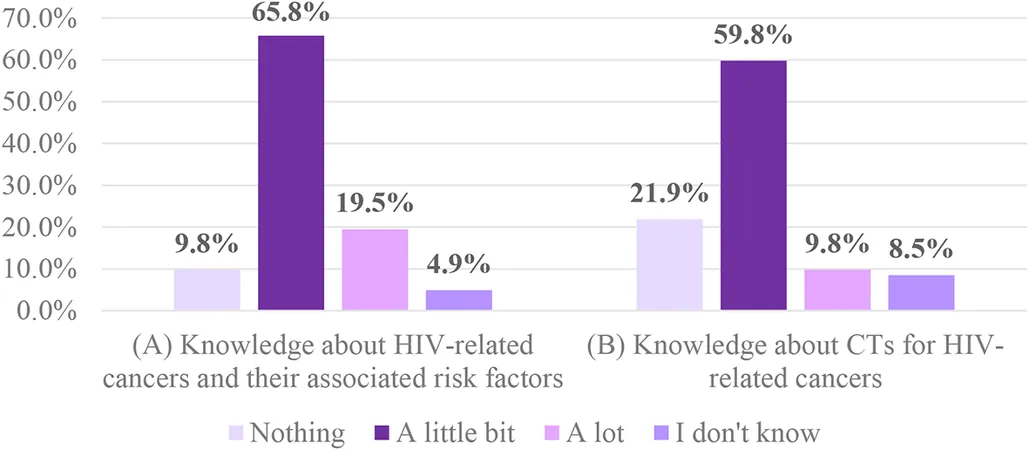
Groundbreaking Study Reveals How Lowering Blood Pressure Can Save Lives for Diabetic Patients!
2025-01-20
Author: Siti
In a groundbreaking discovery, researchers at UT Southwestern Medical Center have unveiled that reducing blood pressure below the current standard can significantly decrease the occurrence of heart attacks, strokes, heart failures, and cardiovascular-related deaths in individuals with type 2 diabetes. This revelation, published in the esteemed New England Journal of Medicine, may lead to the development of new clinical guidelines aimed at enhancing cardiovascular health among this increasingly prevalent population.
Dr. Jiang He, a prominent figure in the study and Chair of Epidemiology at the Peter O'Donnell Jr. School of Public Health at UT Southwestern, emphasizes, "These results strongly support the case for more intensive control of systolic blood pressure to avert major cardiovascular incidents in diabetic patients."
Systolic blood pressure—the top number in blood pressure readings—indicates the pressure exerted on artery walls when the heart beats. While existing guidelines suggest patients with type 2 diabetes should maintain a systolic reading below 130 mm Hg, there has been limited evidence backing this recommendation.
Previous studies, such as the Systolic Blood Pressure Intervention Trial, highlighted the benefits of targeting systolic pressure below 120 mm Hg for the general population. However, no diabetic patients were involved in that research, leaving an important gap in understanding how this recommendation translates for individuals with diabetes.
To bridge this gap, Dr. He and his team initiated the Blood Pressure Control Target in Diabetes trial, involving 12,821 patients with type 2 diabetes and elevated systolic blood pressure. These participants, with an average age of nearly 64 and a nearly equal gender distribution, were randomly divided into two groups, each assigned to different blood pressure goals—standard treatment (less than 140 mm Hg) and intensive treatment (less than 120 mm Hg).
The patients underwent treatment for up to five years, during which their blood pressure and incidence of major cardiovascular diseases were meticulously monitored. Following the initiation of blood pressure medications, participants saw a swift reduction in systolic pressure. After one year, those in the standard treatment group averaged 133.2 mm Hg, while those in the intensive treatment group reached an impressive 121.6 mm Hg.
By the end of the four-year follow-up, stark differences in cardiovascular events between the two groups emerged. The intensive treatment of blood pressure led to a remarkable 21% reduction in the incidence of cardiovascular disease compared to the standard treatment. Specifically, the standard-target group experienced 492 cardiovascular events, primarily strokes, whereas the intensive-target group recorded only 393 events—a difference that is statistically significant.
While both groups encountered comparable rates of serious adverse effects, the intensive-target group did observe higher occurrences of hypotension and hyperkalemia, which are potential side effects of aggressive blood pressure management.
As the prevalence of type 2 diabetes continues to rise globally, these findings signal a potential shift in treatment protocols that could save countless lives. With further validation and studies, we may soon witness a transformation in how diabetes is managed and how cardiovascular health is prioritized in this vulnerable population. Stay tuned for updates as healthcare providers consider adapting these new insights into clinical practice!


 Brasil (PT)
Brasil (PT)
 Canada (EN)
Canada (EN)
 Chile (ES)
Chile (ES)
 Česko (CS)
Česko (CS)
 대한민국 (KO)
대한민국 (KO)
 España (ES)
España (ES)
 France (FR)
France (FR)
 Hong Kong (EN)
Hong Kong (EN)
 Italia (IT)
Italia (IT)
 日本 (JA)
日本 (JA)
 Magyarország (HU)
Magyarország (HU)
 Norge (NO)
Norge (NO)
 Polska (PL)
Polska (PL)
 Schweiz (DE)
Schweiz (DE)
 Singapore (EN)
Singapore (EN)
 Sverige (SV)
Sverige (SV)
 Suomi (FI)
Suomi (FI)
 Türkiye (TR)
Türkiye (TR)
 الإمارات العربية المتحدة (AR)
الإمارات العربية المتحدة (AR)